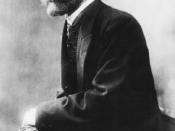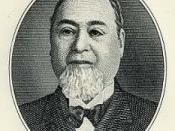The field of anthropology differs from so called "hard sciences" in several major ways. Unlike chemistry or physics, very few anthropological ideas and concepts are regarded as being absolutely correct. In fact it might be fair to say that most anthropologists agree to disagree. The subject matter and goals of this academic discipline are quite complex, and leave much room open for speculation and varying interpretations. In addition to the wide range of topics being investigated, there is also great diversity in the way anthropologists approach their work.
One specific approach is known as French structuralism. The name refers to the professional perspective shared by both Marcel Mauss and Claude Levi-Stauss. These men developed and refined French structuralism after having been influenced by a nineteenth-century French sociologist named Emile Durkheim. Durkheim's study of the correlation between diversity, integration, and culture convinced him that there were two types of social integration: mechanical solidarity and organic solidarity.
Mechanical solidarity describes how antiquated cultures with homogeneous populations are held together by their common traits. Organic solidarity describes the way modern, heterogeneous cultures are made up of diverse individuals who function independently in the same direction.
Durkheim chose to focus on various aspects of group and social unity while placing a large emphasis on the collective consciousness rather than individual perspectives. Collective consciousness can be defined as specific ideas, values and feelings that are shared by all or most members of the group being studied. He created terms such as "elementary forms", which refers to the source and origin of beliefs or ideological traditions within the group mind. A final example of Durkheim's interests would be his examination of the interaction that takes place between social rituals and individual people. He describes social rituals and institutions as being powerful enough to influence lone...


